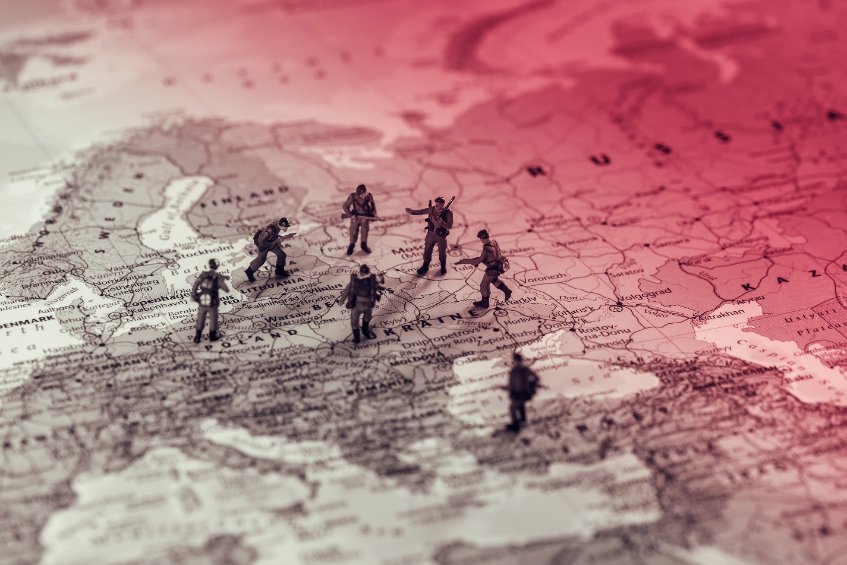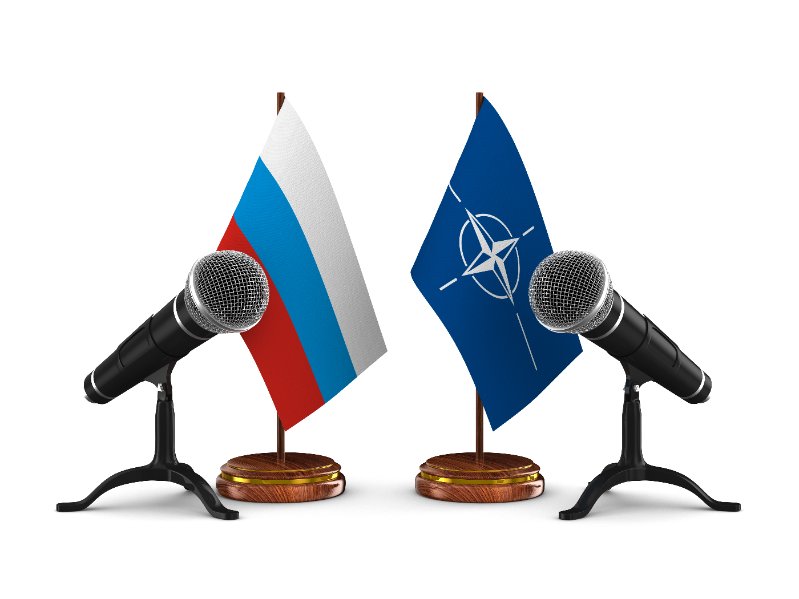NATO and Russia relations

NATO and Russia
NATO and Russia relations
While Russia has never been an official member of NATO, Russia and NATO have established partnerships in the past, including the NATO-Russia Council. Russia has also been a member of NATO’s Partnership for Peace since 1994, along with other non-member countries such as Switzerland and Sweden. In fact, they have had common interests in the past such as countering terrorism, especially after the 2001 terrorist attacks in the U.S., and cooperated for practical reasons.
NATO-Russia Council
After the collapse of the Soviet Union and the transition to a market economy, there was an initial expectation that Russian Federation would become a part of Europe. There was a honeymoon period between NATO and Russia as well. After the 2001 terrorist attacks in the U.S., the interests of both sides coincided in the “war on terror.” In 2002, an organization called the “NATO-Russia Council” was established, in which Russia was treated as an associate member of NATO. In 2010, NATO was even trying to cooperate with Russia on a missile defense program with Iran in mind. Since the collapse of the Soviet Union and the end of the Cold War, NATO has eagerly tried to pursue dialogue with Russia and build a partnership. In April 2014, however, NATO suspended all cooperation with Russia after Russia’s illegal military intervention in Ukraine and annexation of Crimea, while keeping channels of communication open to exchange information on issues of mutual concern.
The Partnership for Peace of 1994
Russia was the first country to join NATO’s Partnership for Peace (PfP) in 1994.
PfP is a program designed to foster practical cooperation between NATO and its partner nations.
As outlined in the Brussels Summit Declaration of 1994, the primary objectives of PfP are to deepen military and political collaboration in Europe, reduce threats to peace, and bolster stability.
Member countries of PFP as of 2022
- Ireland (December 1, 1999)
- Azerbaijan (May 4, 1994)
- Armenia (October 5, 1994)
- Ukraine (February 8, 1994)
- Uzbekistan (July 13, 1994)
- Austria (February 10, 1995)
- Kazakhstan (May 27, 1994)
- Kyrgyzstan (June 1, 1994)
- Georgia (March 23, 1994)
- Switzerland (December 11, 1996)
- Sweden (May 9, 1994)
- Serbia (December 14, 2006)
- Tajikistan (February 20, 2002)
- Turkmenistan (May 10, 1994)
- Finland (May 9, 1994)
- Belarus (January 11, 1995)
- Bosnia and Herzegovina (December 14, 2006)
- Moldova (March 16, 1994)
- Russia (June 22, 1994)
1997: The NATO-Russia Founding Act
In May 1997, NATO leaders and Russian President Boris Yeltsin signed the NATO-Russia Founding Act. Both parties expressed their determination to cultivate a lasting and inclusive peace in the Euro-Atlantic area.
The act outlined cooperation in several domains, including peacekeeping, arms control, and counter-terrorism. Additionally, both parties committed to upholding human rights and agreed to refrain from the use of force in their relations.

On January 12, 2022, NATO convened a meeting of the NATO-Russia Council in Brussels, the first in two and a half years, to address the escalating tension in Ukraine. This tension was a result of the Russian military buildup along the Ukrainian border. The discussions proved challenging due to the stark differences between the two parties. Russia demanded that NATO not extend its reach to regions of the former Soviet Union, while NATO declined to acquiesce to these demands.
After the NATO summit in Madrid in June
In late June 2022, the North Atlantic Treaty Organization (NATO) adopted a new strategic concept, effectively positioning Russia as a de facto adversary and emphasizing a significant bolstering of its military capabilities.
NATO has resolved to augment its rapid reaction force, designed to respond swiftly to crises, with the force set to exceed 300,000 troops. These rapid response units are not permanently stationed on the front lines. Instead, they are assembled as integrated land, sea, and air units tailored to the specific nature of a crisis, with member countries contributing a predetermined number of troops on a case-by-case basis.
The resolution agreed upon at the NATO summit in June entailed a notable increase in the troop count of the Quick Reaction Force. From the current 40,000, the numbers would surge to 100,000 within 10 days of a crisis onset, 200,000 between 10 to 30 days, and reach 500,000 between 30 to 180 days.
Complicated relationship between NATO sand Russia
The relationship between Russia and NATO has been complicated and often tense over the years. NATO is a military alliance formed in 1949 by North American and European countries to provide collective defense against potential military threats. Russia, on the other hand, is a large and powerful country that borders several NATO members, including Norway, Poland, Estonia, Latvia, and Lithuania.
After the end of the Cold War and the collapse of the Soviet Union, there were hopes for a new era of cooperation between Russia and NATO. In 1997, Russia and NATO signed the NATO-Russia Founding Act, which aimed to build a “lasting and inclusive peace in the Euro-Atlantic area.” However, tensions have risen since then, particularly over NATO’s expansion into countries that were once part of the Soviet bloc.
Russia has been critical of NATO’s expansion, seeing it as a threat to its security and influence in the region. In 2014, Russia annexed Crimea from Ukraine, which led to increased tensions with NATO. NATO has responded by increasing its military presence in the region, conducting military exercises and establishing a presence in Eastern Europe.
Since then, there have been several incidents that have increased tensions between Russia and NATO. These include the downing of a Russian fighter jet by Turkey in 2015, Russia’s involvement in the Syrian conflict, and the alleged interference in the 2016 US presidential election by Russian agents.
Currently, the relationship between Russia and NATO remains tense, with both sides engaging in military posturing and increasing their military capabilities. However, there are still ongoing diplomatic efforts to improve relations and reduce tensions










